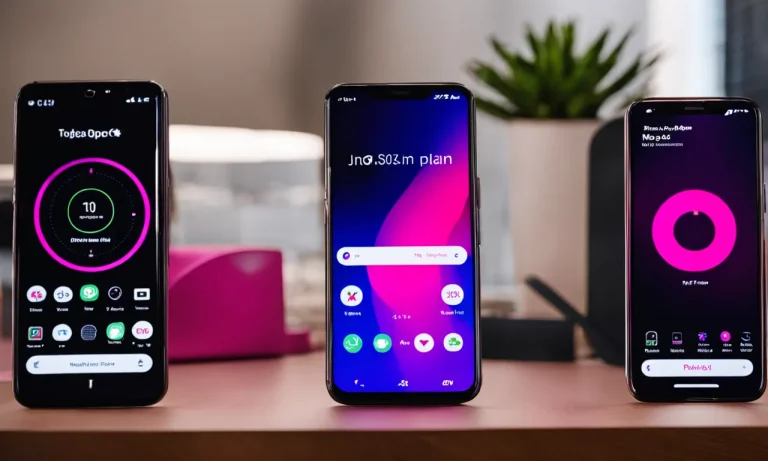Are Old Tvs Worth Anything In 2023?
With the rapid advancements in technology over the past few decades, you may be wondering if that old boxy television sitting in your basement or garage is worth holding onto.
If you’re short on time, here’s a quick answer to your question: While most old TVs have little monetary value, some vintage and rare models can still fetch a decent price from collectors and enthusiasts.
In this comprehensive guide, we’ll explore the various factors that impact the value and desirability of old televisions in order to help you determine if that decades-old set is worth keeping or tossing out.
What Impacts the Value of Vintage TVs
Age and Era of Manufacture
The age and era of manufacture play a significant role in determining the value of vintage TVs.
Older TVs from the 1950s and 1960s tend to be more valuable due to their historical significance and unique design features.
These vintage TVs are often sought after by collectors and enthusiasts who appreciate the nostalgia they bring.
The era in which a TV was manufactured can also influence its value as certain time periods are associated with technological advancements or iconic designs.
Brand and Model
The brand and model of a vintage TV can greatly impact its value. Well-known and reputable brands such as RCA, Zenith, and Philco are generally more sought after, as they are associated with quality craftsmanship and innovative technology.
Additionally, certain models may have specific features or design elements that make them particularly desirable among collectors.
It’s worth noting that rare or limited-edition models from any brand can command a higher price due to their scarcity.
Size and Type of Display
The size and type of display are important factors when determining the value of a vintage TV.
Larger screens, especially for their time, are generally more valuable as they were less common.
Additionally, certain types of displays, such as color TVs or those with unique screen technologies, can increase their value as they represent advancements in the industry.
For example, a vintage CRT TV with a curved screen may be more valuable than a standard flat-screen model.
Condition and Working Status
The condition and working status of a vintage TV are crucial in determining its value.
TVs that are in excellent cosmetic condition, with minimal wear and tear, are generally more valuable.
Moreover, TVs that are fully functional and still able to receive a signal are highly sought after by collectors.
It’s important to note that vintage TVs may require maintenance or repairs due to their age, so a TV that is in good working order can command a higher price.
Rarity and Collectibility
The rarity and collectibility of a vintage TV can significantly impact its value.
TVs that were produced in limited quantities or have unique features that make them stand out from the rest are highly sought after by collectors.
For example, a TV with a rare color scheme or a design collaboration with a famous artist can greatly increase its value.
It’s important to research the rarity and collectibility of a specific vintage TV model to understand its potential value.
Most Common Types of Old TVs
Cathode Ray Tube (CRT)
The Cathode Ray Tube (CRT) television was the most common type of TV for several decades.
These TVs used a large glass screen and a cathode ray tube to produce images.
CRT TVs were known for their bulky size and heavy weight. They also had a curved screen, which some people found to be more immersive.
However, with the advancements in technology, CRT TVs have become outdated and are rarely used today. They have been largely replaced by newer, slimmer, and more energy-efficient television models.
Rear Projection
Rear projection TVs were popular in the 1990s and early 2000s. These TVs used a technology called Digital Light Processing (DLP) or Liquid Crystal Display (LCD) projection to project images onto a screen.
Rear projection TVs were known for their large screen sizes and high-quality pictures. However, they were also quite bulky and required a lot of space.
With the development of flat-screen TVs, rear-projection TVs have become less common and are not as popular as they once were.
Early Flat Screens (LCD, Plasma)
The early flat-screen TVs, such as LCD and Plasma TVs, revolutionized the television industry.
LCD (Liquid Crystal Display) TVs use a liquid crystal display to produce images, while Plasma TVs use tiny cells filled with gas to create images.
These TVs were much slimmer and lighter compared to CRTs and rear projection TVs. They also offered better picture quality and were more energy-efficient.
However, with the rapid advancements in technology, LCD and Plasma TVs have been replaced by newer technologies such as LED and OLED TVs, which offer even better picture quality and energy efficiency.
While these old types of TVs may hold nostalgic value for some individuals, they are generally not worth much in terms of resale value.
The demand for these TVs has significantly decreased over the years as newer and more advanced TV models have become widely available in the market.
Nowadays, most people prefer slim and high-definition TVs with features like smart capabilities and streaming services integration.
However, if you have an old TV that is still in working condition, you can consider donating it to a local charity or recycling it responsibly to help reduce electronic waste.
Notable Collectible and Valuable Models
Early Black and White Sets
Old black and white television sets hold a special place in the hearts of collectors.
These early models, such as the RCA 630TS, are highly sought after for their historical significance. They were the first televisions to bring moving images into people’s homes, revolutionizing entertainment.
While the value of these sets can vary depending on their condition and rarity, some collectors have been known to pay thousands of dollars for a well-preserved black and white TV from the 1940s or 1950s.
If you happen to come across one of these gems in your attic or at a flea market, don’t dismiss it as worthless. Take the time to research its make and model to determine its potential value. You might be pleasantly surprised!
Vintage Console Televisions
Vintage console televisions, also known as television cabinets, were popular in the 1960s and 1970s.
These large, wooden cabinets housed the television set and often featured additional storage space for record players or radios.
Today, these console televisions are considered highly collectible and can fetch a decent price among enthusiasts.
Some notable vintage console television models include the Zenith Chromacolor II and the Philco Predicta.
These sets are valued not only for their functional aesthetics but also for the innovative technology they introduced during their time.
Collectors appreciate the craftsmanship and attention to detail that went into creating these vintage pieces of furniture.
Early Color TVs (1950s-60s)
The introduction of color television in the 1950s and 1960s marked a significant milestone in the history of television.
Early color TV models, such as the RCA CT-100, are highly sought after by collectors. These sets played a pivotal role in shaping the way we experience visual media today.
The value of early color TVs depends on various factors, including their condition, rarity, and historical significance.
Collectors are often willing to pay a premium for well-preserved color TVs from this era, especially those with iconic designs or unique features.
Novelty and Rare Models
Television manufacturers occasionally released novelty or rare models that have become highly sought after by collectors.
These sets often featured unique designs, unusual features, or limited production runs, making them valuable additions to any collection.
One such example is the Panasonic CT-101, also known as the “Panapet.” This compact, portable television set was designed to resemble a small radio and was popular in the 1970s.
Today, the Panapet is considered a collector’s item and can fetch a significant price.
If you’re interested in collecting rare or novelty television sets, it’s important to do your research and keep an eye out for unique models that may have flown under the radar.
Online marketplaces, antique stores, and specialty collector forums can be valuable resources for finding these hidden treasures.
What to Do With an Old TV
Sell to Collectors
If you have an old TV that is in good working condition and has some historical value, you may be able to sell it to collectors.
There are many enthusiasts out there who appreciate the nostalgia and uniqueness of vintage televisions.
Some models, especially those from well-known brands or popular eras, can fetch a decent price.
Before selling, do some research to determine the market value of your old TV.
Websites such as eBay and collector forums can provide insights into the prices that similar TVs are selling for.
Don’t forget to take good-quality pictures and write an accurate description to attract potential buyers.
Donate or Recycle Responsibly
If your old TV is no longer functional or if you simply want to upgrade to a newer model, consider donating or recycling it responsibly.
Many local charities and nonprofit organizations accept old TVs and other electronic devices. These organizations can either refurbish the TV for resale or recycle its components in an environmentally-friendly manner.
Before donating, ensure that the organization accepts electronic donations and check if there are any specific requirements or restrictions.
Alternatively, you can also contact your local recycling center to inquire about their electronic waste recycling program.
Proper disposal of old TVs helps reduce electronic waste and protects the environment.
Repurpose for Art or Furniture
If you have a creative streak, repurposing your old TV can be a fun and unique project.
There are various ways to transform your old TV into a piece of art or furniture. For example, you can remove the screen and turn the TV into a funky fish tank or a stylish bookshelf.
Alternatively, you can keep the TV intact and use it as a retro-inspired display stand for plants or decorative items.
The possibilities are endless! Just make sure to take necessary precautions when repurposing electronics, such as removing any hazardous materials and ensuring proper ventilation if modifying the TV’s structure.
Let your imagination run wild and give your old TV a new lease on life.
Conclusion
While most analog tube televisions and early flat-screen models have declined greatly in value over the years, there is still a niche market among collectors of rare vintage sets in good condition.
For common models with little monetary worth, recycling or repurposing the TV may be better options than letting it take up space.
We hope this guide gave you a clear idea of what impacts the value of that old television gathering dust in your home.










